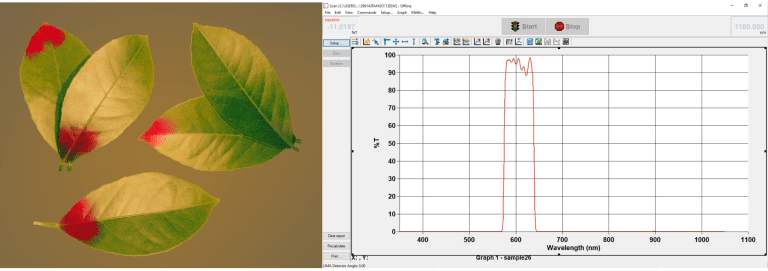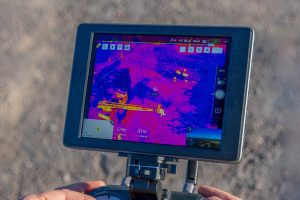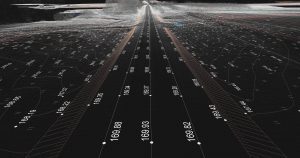Key Takeaways:
- Optics in agriculture, powered by advanced sensors, revolutionize farming with real-time crop health data and precision farming techniques.
- Smart agriculture sensors like hyperspectral and LIDAR provide detailed insights into soil composition, plant health, and growth patterns, enabling targeted interventions for water, fertilizer, and pest management.
- This approach reduces chemical use, boosts efficiency, and enhances yield.
- Avantier offers custom optics for agricultural applications, supporting farmers with high-performance solutions tailored to optimize smart agriculture practices.
Smart agriculture, powered by cutting edge optics, is transforming the way we produce food today. Optics in agriculture have the ability to provide an in depth understanding of many facets of crop health, and the use of optical sensors is gaining widespread popularity as a way of optimizing yield. It may be utilized to provide continuous crop monitoring and flag potential issues before they become problematic. Machine vision systems can also guide precision machinery, and artificial lighting enables farmers to maximize growth even under adverse outdoor conditions.

In this article we’ll look at some of the optical systems used in smart agriculture. First, though, just what are the benefits of harnessing optical technology for agriculture?
Benefits of Optics in Agriculture
A few of the benefits of using optics in agriculture include:
Increased Efficiency: Optical monitoring provides real-time information on crop health that enables the farmer to target water, fertilization, and pest control to areas that need it, reducing waste. Machine vision systems enable streamlined cultivation, irrigation, harvesting, and sorting of produce.
Reduced Chemical Use: Optical monitoring systems enable targeted responses to actual problems, rather than relying on blanket preventative methods to safeguard their crops against a host of potentially nonexistent pests.
Cost Savings: Optical-powered precision agricultural methods provide significant cost-savings when compared to traditional ‘blind’ agricultural management methods.
Improved Yield and Productivity: Quick response to emergent conditions leads to healthier plants and livestock, resulting in higher yields.
How Optics Power Smart Agriculture
Precision agriculture systems rely on optics to provide precise, real time information on crop health and growth. Here, let’s focus on two specific types of optical monitoring sensors: hyperspectral sensors and LIDAR.
Focus in: Hyperspectral Sensors in Agriculture
RGB sensors measure light at three color bands and multispectral sensors at 4-10 different bands, but when you use a hyperspectral sensor you can measure light at dozens or even hundreds of narrow, adjacent bands. This provides a wealth of information about imaging targets, whether that be soil, minerals, or vegetation.

Do you need information on a plant’s chemical composition? Hyperspectral sensors can provide that. They can also give you details of health and maturity, and provide precise information on leaf density, water, and chlorophyll content. Pathogens are visible with hyperspectral sensors before they are visible to the human eye, and these optics can be used to determine early stages of nutrient deficiency as well. Some farmers even use hyperspectral sensors to predict the shelf life of leafy greens!

Focus In: LIDAR in Agriculture
LIDAR is another powerful optical tool in the precision farmer’s toolbox. This multi-faceted tool can be used to create detailed 3D maps of farming land, complete with variations in slope, aspect, and elevation as well as soil type and water flow. This knowledge enables farmers to make intelligent decisions on what to plant where, as well as to plan effectively to avoid soil erosion, improve irrigation, and make the most of natural water catchment areas.
During the growing season, LIDAR can be used to provide a bird’s eye view— comprehensive but detailed— on crop growth and expected yield. It is often turned to after a drought or environmental disaster to help farmers determine exactly how badly a particular crop has been damaged.
Optics in Agriculture: A Dynamic Field
These are just a few examples of optics in agriculture, providing farmers with an in-depth understanding of the land they cultivate and of the growth of their crops. But optic use is far-reaching, and can provide information into almost any aspect of plant growth. IR sensors measure crop temperature and provide insights on plant respiration and moisture content. Multispectral sensors can give information on plant health, maturity levels, and the levels of contamination or presence of foreign bodies. Even basic RGB sensors can be used to produce maps of vegetation growth at different stages, predict yield, and minimize chemical load.
At Avantier, we produce custom optics for high-performance optical applications, including those in agriculture. If you’d like more information on how we can work with you to get you the optical components you need, contact us! We’d love to partner with you and enable you to get the most out of your precision agriculture setup.
GREAT ARTICLE!
Share this article to gain insights from your connections!






